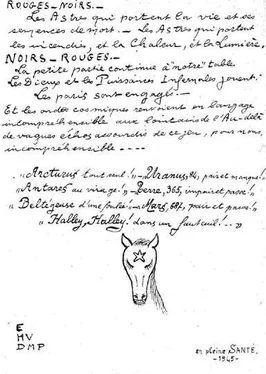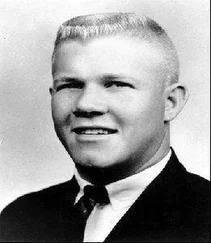For Nazi officers and their favored French collaborators, Paris had become the Babylon of the Third Reich. There were lavish champagne-and-caviar parties hosted by Ambassador Otto Abetz on rue de Lille, and equally extravagant affairs organized by Luftwaffe General Friedrich-Carl Hanesse in the Rothschild mansion on Avenue de Marigny. Famous restaurants, like Maxim’s, Lapérouse, and La Tour d’Argent, catered to every whim, as did cabarets, nightclubs, and brothels, many of which enjoyed exemptions from the official curfew. As New York Times correspondent Kathleen Cannell put it, at the time of the discovered bodies on rue Le Sueur in March 1944 Nazi-occupied Paris seemed to be “dancing with false gaiety on a rumbling volcano.”
For most Frenchmen, however, the last four years represented fear, cold, hunger, and humiliation. No group of people, of course, fared worse than the Jews. Almost immediately after the conquest, the 200,000 Jews of France began losing their basic civic rights. As of October 3, 1940, they could no longer serve in positions of authority in government, education, publishing, journalism, film, and the military. The following day, civil authorities were granted the power to intern foreign-born Jews in “special camps.” Three days later, the repeal of the Crémieux Act stripped citizenship from another 1,500 Algerian Jews.
The flurry of discriminatory laws was relentless. By early 1941, Jews could no longer work in banking, insurance, real estate, or hotels. Quotas restricted the number of Jews allowed to practice the legal and medical professions to 2 percent, though this, too, was later expanded into an outright ban. Jewish shops were soon to be “Aryanized,” that is, seized by the state and the ownership handed over or sold at a bargain rate to non-Jews. The aim was to “eliminate all Jewish influence in the national economy.”
It was not long before the rafles , or roundups, began. On May 14, 1941, the first rafle resulted in the arrest and internment of 3,747 innocent Jewish men. Ten months later, on March 27, 1942, “special train 767” left France with the first convoy of 1,112 Jews packed into overcrowded third-class passenger cars, bound for the new extermination camp of Auschwitz-Birkenau. Eighty-four deportations would follow, most of them in sealed cattle cars. SS Lieutenant General Reinhard Heydrich and his deputy Adolf Eichmann would continually press French authorities to quicken the pace. In all, 75,721 Jewish men, women, and children would be deported from France to Nazi death and concentration camps in the east. Only 2,800 of them would return home.
Paris under the Nazi Occupation was, in the words of historian Alistair Horne, the four darkest years of the city’s two-thousand-year history. For many Parisians indeed, it was a nightmare of tyranny and terror, resulting in a desperation to escape that would be ruthlessly exploited by one man in its midst.
WHAT Massu did after his initial search of the town house might seem peculiar at best. He did not go straight to rue Caumartin to look for Dr. Petiot, nor did he send any detectives there. Instead, he went home.
A French law, dating back to December 13, 1799 (22 Frimaire of the French Revolutionary Calendar), prohibited the police from barging in on citizens during the middle of the night unless there was a fire, flood, or an invitation from inside the residence. Article 76 of the Constitution of Year Eight, as it was known, had been written to stop the late-night arrests that occurred during the Reign of Terror. But in a case of this magnitude, Massu could have simply posted men outside Petiot’s apartment to wait for the legal hour. Clearly, there was another explanation for his inaction.
The commissaire suspected that 21 rue Le Sueur had been used by the Gestapo, the German secret state police, that had seized control of French internal affairs. Established in April 1933 to eliminate “enemies of the state” as part of Adolf Hitler’s consolidation of power, the Gestapo had swelled from some three hundred officials in a former art school on Prinz-Albrecht-Strasse in Berlin to a total of forty thousand agents and many more informers across Occupied Europe. In the name of law and order, they could spy, arrest, imprison, torture, and kill with almost complete impunity. The organization was above the law, and there was no appeal.
Massu had reasons for presuming a possible Gestapo connection. There was not only the butchery and brutality of the crime scene, but also the fact that the German security forces had preferred to set up its offices in the chic 16th arrondissement. Around the corner on the Avenue Foch, for instance, were Gestapo buildings at Nos. 31, 72, 84, and 85, along with offices of the related SS secret service the Sicherheitsdienst, or SD, at Nos. 19–21, 31 bis, 53, 58–60, 80, and 85. Many other German military, counterespionage, and Nazi Party offices were located on this street as well.
A swastika had flown over the building across from Petiot’s property. The garage at No. 22 had been appropriated by Albert Speer’s Organization Todt, a vast supply company that supervised German construction projects in Occupied Europe. In Paris, this group was doing everything from melting down bronze statues for armaments to sending laborers north to construct the Atlantic Wall against an Allied invasion.
The French police, of course, had no authority over the Gestapo or any of its activities. In a protocol signed with SS Brigadier General Karl Oberg on April 18, 1943, the secretary general of the French police, René Bousquet, had to agree to work with the occupying power to maintain “calm and order in an always efficient manner.” Specifically, the French would have to help German police combat the “attacks of the communists, terrorists, agents of the enemy and saboteurs as well as those who support them: Jews, Bolsheviks, Anglo-Americans.” To add further insult to humiliation, French policemen had to salute German officials whenever they encountered them in the street—this was the notorious Grusspflicht .
This subordination was to be endured, the argument went, because it was preferable to the alternative: namely, a police force staffed only by the occupying power and the many extremist militaristic organizations that collaborated with the Nazis. Such circumstances would not only lead to frightening police brutality, but also offer few chances to sabotage German authorities. Many members of Resistance organizations, on the other hand, scorned this position as a mere rationalization of a cowardly, self-interested collaboration between enemy and traitors.
Still, despite his initial hunch that the human remains on rue Le Sueur were somehow tied to the Gestapo, Massu had some nagging doubts. For one thing, he had not been warned off the site, as surely would have happened in advance or soon after the discovery of the bodies on its premises if there had been a Gestapo affiliation. Nor had he encountered any Gestapo agents on the property, which also would likely have occurred if the building had served as an extension of the secret state police. Hours after the initial phone call from his secretary, Massu had still not received any communication from German authorities.
COMMISSAIRE Massu arrived at his office at 36 Quai des Orfèvres on the Île de la Cité about nine o’clock on the morning of March 12, 1944. His windows on the third floor of the sprawling Police Judiciaire overlooked the horse chestnut trees of the place Dauphine, the restaurant Le Vert-Galant, and the Pont Neuf, the oldest bridge in Paris and still standing despite the increased threat of Allied bombing raids.
Some inspectors were drawing up reports; others looked after detainees in the corridors, none of whom, unfortunately, would turn out to have anything to do with 21 rue Le Sueur. Picking up the Petiot file, which was begun the previous night, Massu prepared to return to the town house to meet a team of dignitaries and officials that included his immediate superior, the prefect of police Amédée Bussière, who was eager to inspect the site for himself as he would have to report to both French and German authorities.
Читать дальше












